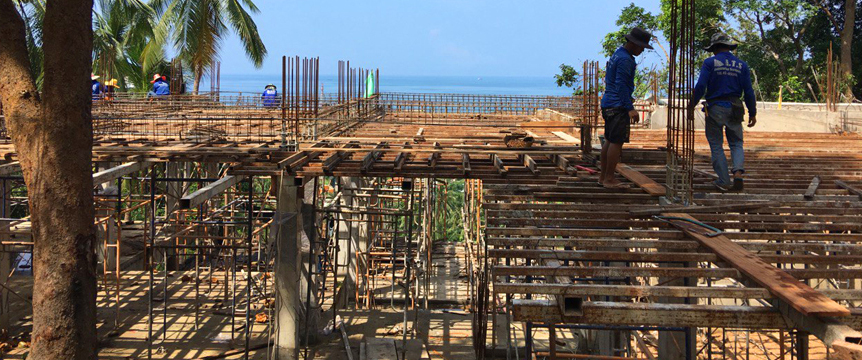
Building Right – Building Regulations on Samui
As in most countries when building you will have to meet certain official requirements. There are minimum construction and engineering standards, there will often be aesthetic and design standards to adhere to, and there will be land usage, capacity and positioning regulations as well. In this article we will look at the last of this list, the land usage and positioning regulations. Building positioning regulations are covered by the Building Control Act. The City Planning Act controls land and building use in designated areas. Given Samui's geography of flat beach land and steep mountainside land the relevant regulations stipulate how far from the shoreline or the beach structures can be located, as well as what can be built and how depending on the land's altitude and slope.
Let's take a close look at how some of these requirements will influence your construction plans:
First there are rules on the distance from the beach or shoreline.
• Within 10 meters from the beach: No construction at all is allowed.
• From 10 to 50 meters from the beach: You can build a one-storey building a height (including roof) not exceeding 6 meters and the total built area cannot exceed 75 sqm.
• From 50 to 200 meters from the beach: You can build to a height of 12 meters (roof included) and the total built area cannot be greater than 2,000 sqm.
• 200 meters from the beach and further: You can build to a height of12 meters (roof included) and there is no restriction regarding the total built area.
The shoreline is not a surveyed and charted line and is open to interpretation. It is often local government officials who will determine exactly where it lies.
Next, if you are building on elevated land then there are rules pertaining to altitude.
• Less than 80 meters above the sea level: There are no additional rules apply at this level for private residential properties.
• Between 80 and 140 meters above the sea level: The land area should be at least 400 sqm. 50% of the land must remain unbuilt and the maximum construction height cannot exceed 6 meters (roof included).
• More than 140 meters above the sea level: The land area should be at least 400 sqm. 50% of the land must remain unbuilt and the maximum construction height cannot exceed 6 meters (roof included). In addition the building footprint cannot exceed 90 sqm.
Finally, if your land is on an slope, which of course most land on this volcanic tropical island is, then there are some additional regulations.
• Slope of less than 35 degrees: No specific restrictions apply in addition to those mentioned above.
• Slope of 35 to 50 degrees: Only a single family home is permitted, which cannot exceed a total height of 6 meters (roof included) and the building foot print cannot exceed 80 sqm. 75% of the land area must remain unbuilt and half of this unbuilt area must be planted with native trees to help stabilise the land.
• Slope of more than 50 degrees: All construction is prohibited.
There are also some regulations that determine the architectural design should be based on traditional Thai, tropical or local aesthetics and the roof must cover 80% of the building and others that ensure development of the island remains sustainable. With professional team of architects and experience in construction we will be able to advise on the most relevant and recent rules.
Contact us now by email sales@sunwaysamui.com or call +66(0)9-300-100-90 (WhatsApp available).
Please Note: Information provided in this article is meant as a general introduction and guide only. Topics discussed are based on the situation at the time of publication. As relevant laws and regulations do change Sunway Samui strongly recommends all investors and developers contact a reputable law firm and/or accounting firm, professional architects and consulting engineers for personalized and professional advice.
02.05.2024


